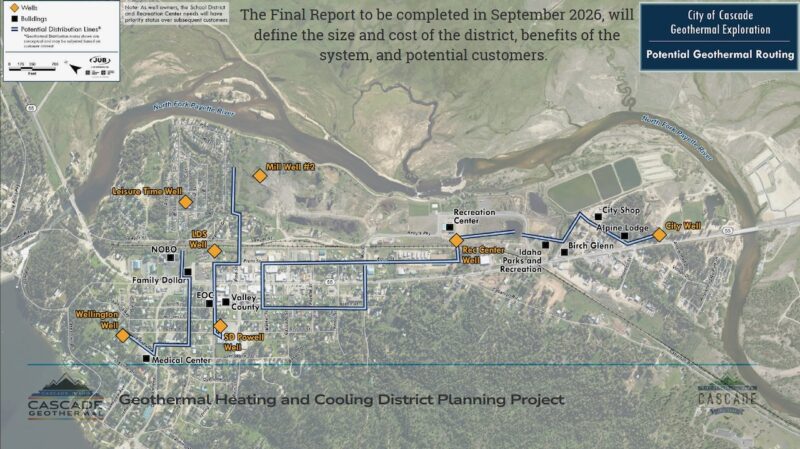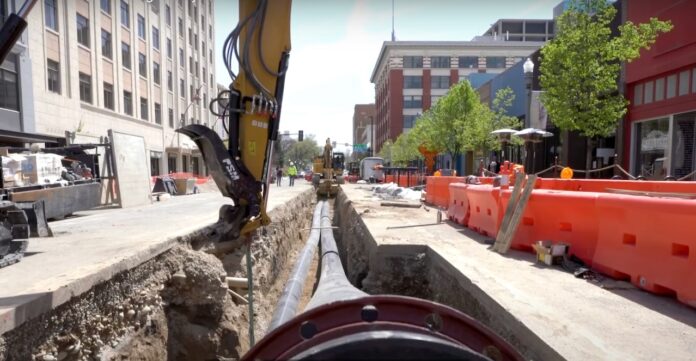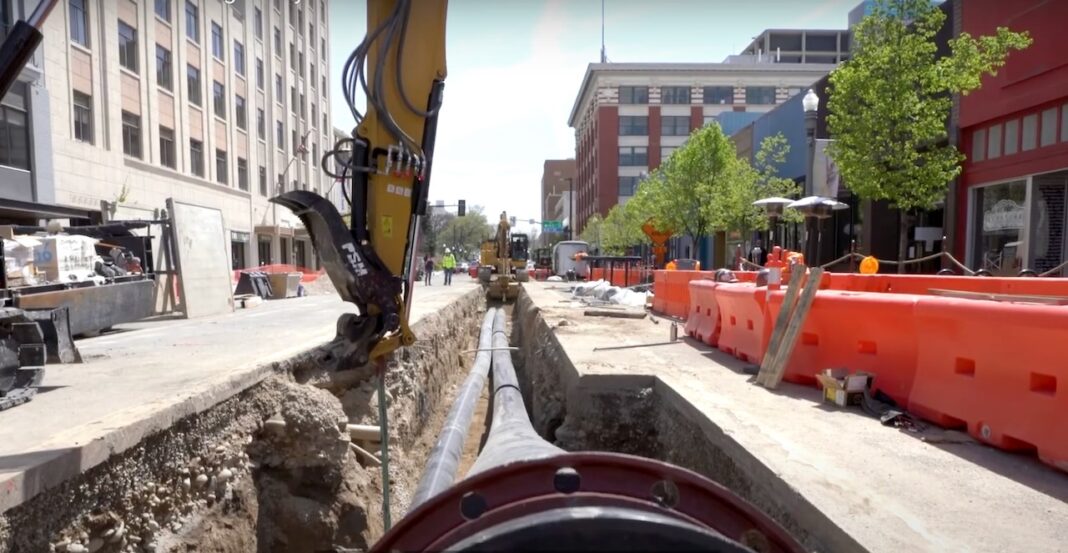Water from as far as 1,000 feet underground could be used to heat and cool homes and businesses in Cascade, attendees of an open house were told on Thursday.
The open house, held at the American Legion Post 60 in Cascade, provided an overview of the city’s preliminary plans to begin building a geothermal energy network.
Once complete, the network could lower energy costs by up to 66% for homes and businesses connected to the geothermal system, said Trevor Howard, the city’s engineer.
“It’s very conceivable that there’s enough geothermal resources in there that the entire city could be served,” Howard said.
The network would rely primarily on seven existing geothermal wells in Cascade, including two that have heated Cascade Schools and the Cascade Aquatic & Recreation Center’s pool for more than 15 years.
A feasibility study that is currently underway would determine the total capacity of the wells, potential users, and estimated savings the network could generate, Howard said.
The study is expected to be completed in 2026. It is funded by a $200,000 grant awarded to the city.
How does geothermal energy work?
Harnessing geothermal energy involves pumping water from underground to heat pumps in homes and businesses. The water can be used for either heating or cooling.
“You extract the energy out of the water to heat or put energy into it for cooling,” Howard said.
The wells that serve the system are operated and maintained very similarly to drinking water wells.
In Cascade, the geothermal well depths range from 300 feet to 1,000 feet, with water temperatures ranging from about 70 degrees Fahrenheit to 100 degrees.
Infrastructure for the system would mostly consist of underground pipes and the existing wells.
“If we put this system in, you probably won’t even know it’s there,” Howard said.

Funding to be determined
Funding for distribution pipelines is currently unknown, but Howard suggested grants, Idaho Power incentive programs, tax credit programs, and bond initiatives could be used.
Homes and businesses would also need to convert existing heat pumps to be water-fed or install heat pumps to tap into the geothermal network. A survey gauging property owners’ interest in connecting to the system will be posted soon on the city’s webpage for the project.
Howard cited a $1,000 Idaho Power incentive for geothermal heat pump installations and multiple tax credit programs that can help lower connection costs.
Without donors like you, this story would not exist.
Make a donation of any size here
“There are avenues to reduce the cost for installing these systems, and they can be used for new systems or retrofitting systems,” he said.
The city’s system would likely be confined by the North Fork of the Payette River due to cost and energy loss associated with getting pipelines across the river.
Existing geothermal use
Cascade Mayor Judith Nissula said she hopes to convert a heat pump in the city’s Public Works shop so that it can be connected to an existing city geothermal well near Cascade Sports Park.
“I hope to be able to get that accomplished by the end of the year,” Nissula said.
Currently, the Cascade Aquatic & Recreation Center draws 100-degree water from its geothermal well to heat its pool and the surrounding concrete. That system has been in place since 2010.
Meanwhile, Cascade Schools have used 70-degree water from its geothermal well to heat the school since 2004.
The cities of McCall and Donnelly do not currently have any geothermal wells. However, there is evidence that warm groundwater is present both north and south of Cascade in Valley County, said Roy Mink, who owns Mink GeoHydro, a geothermal energy consulting firm based in Boise.
The City of Boise has the largest geothermal heating system in the nation, with over 6 million square feet of space heated by groundwater as warm as 177 degrees. Overall, the system has 20 miles of pipeline that heat 88 buildings.






